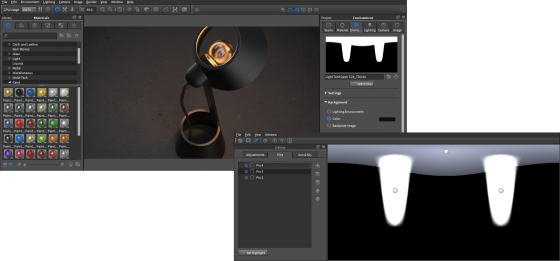The fourth patent awarded to the maker of Keyshot rendering software improves the ability to gain instant visualization of the light in a model environment.
Software vendor Luxion, maker of KeyShot, has been granted a US Patent for an editing technique related to real-time lighting in High Dynamic Range (HDR) 3D models. The patent, “Live editing and integrated control of image-based lighting of 3D models” is the fourth patent granted to Luxion.

“Creating, modifying or adjusting image-based lighting has always been difficult in, or disconnected from, rendering software,” says Claus Wann Jensen, CEO and co-founder at Luxion “This solution not only provides a new method for adding and adjusting light, but also provides instant visualization of the light in the model environment.”
Jensen is listed as one of five co-inventors, along with Sean Geggie, Jeffrey McCartney, Thomas Teger, and Hennk Wann Jensen. This patent is added to three of Luxion’s current patents for material templates for automatic assignment of materials, animation of 3D models using offset transforms, and the rendering of interactive 3D model representations.
After first filing for protection of the intellectual property on March 2012, Luxion’s integration of high dynamic range (HDR) image editing within KeyShot provided users of the software the ability to edit an HDR image, which represents omni-directional, real-world environment lighting, by adding and adjusting lights while seeing the results instantly in real-time within KeyShot. Additionally, users are able to modify the HDR image, adding highlights to their model, by simply selecting the area of the model to be lit.
The full abstract of the patent:
The present invention relates to a system, method, and apparatus that include a novel connection between a 3D raytracing application and an editing application to allow live editing of an image representing the lighting of a 3D model. Further embodiments include a novel pin control in the editing application that allows pin control of lighting of a specific portion of the lighting image and 3D model to adjust the intensity, color, and blur of the environment within a given region. The pins can also be used to copy regions of data from the lighting image to new locations. The pins can be placed either directly by clicking in the lighting image or by clicking on the 3D model in the raytracing application to indicate where the illumination should fall or reflect.
What do we think?
A key researcher at a competitor to Luxion once told me during a release of new software from his company, “all the problems of visualization are now solved. The rest is CPU speed.” It seems Jensen and his colleagues at Luxion never got that memo.





